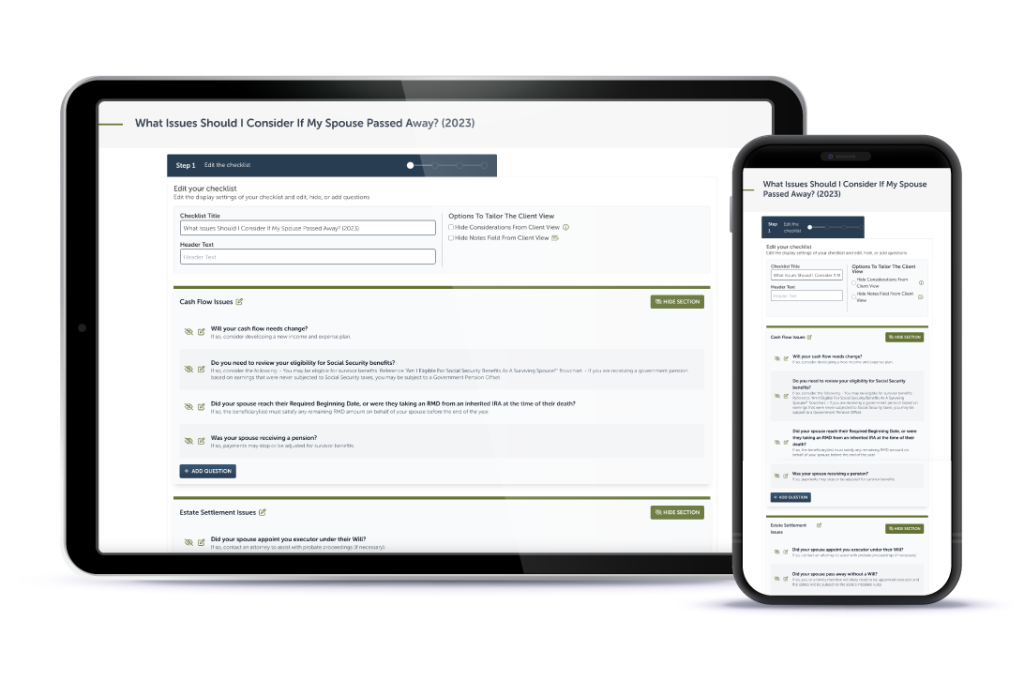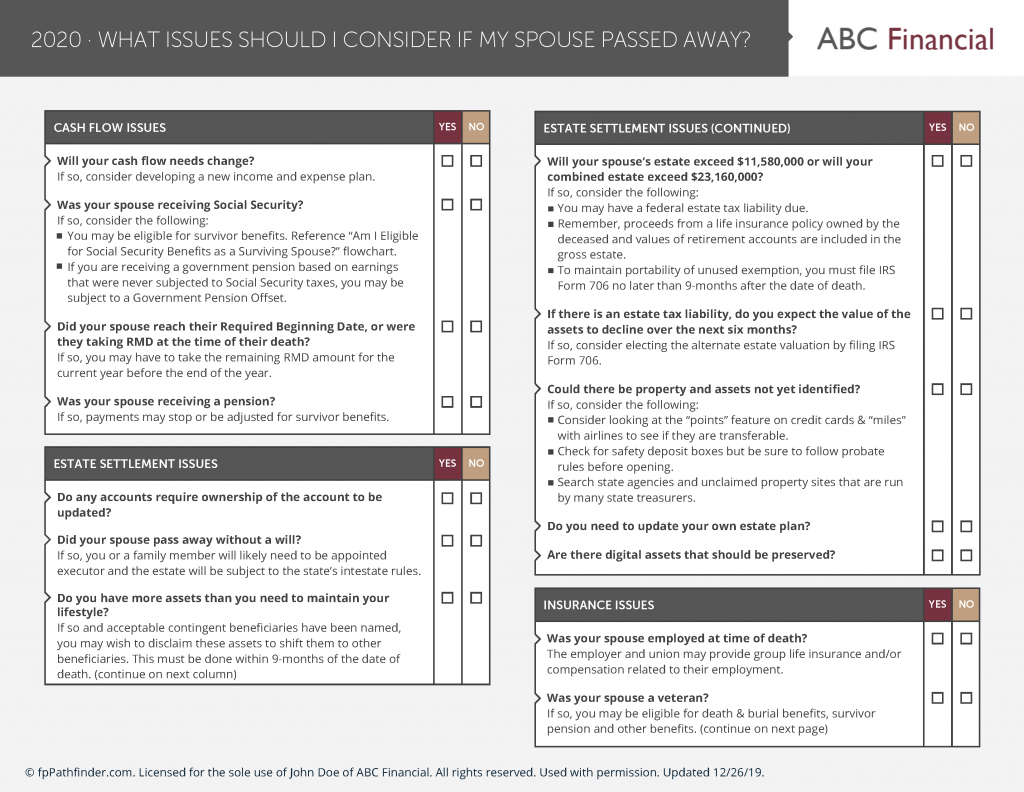Below are six (more) ways you can start to incorporate the checklists and flowcharts into your business. And if you missed it, here are five other ways that fpPathfinder will be able to help you and here is a curated list of the most popular checklists and flowcharts advisors first used when they became members.
- Respond to client questions faster: This use case is especially important when it comes to an unscheduled client call to the planner, with what “should” be a simple and straightforward planning question. But if the planner is preoccupied or distracted he/she may not give the most thorough answer, or not remember to ask the appropriate probing questions. At best, this could lead to the planner needing to do more research before calling back with answers. At worst, the planner could give improper advice off the cuff that could actually harm the client. Flowcharts readily available as a desk reference for the planner ensures that all the major decision points and issues have been addressed right there on the spot, saving time for the advisor, and getting the client the answer they wanted quickly.
- Client educational tool: Clients can benefit from flowcharts just as much as a planner. Much of what individuals hear and learn from the mass media related to financial planning is incomplete and does not fully capture the complexity of the financial planning process. It can be overwhelming for clients, leading them to make a bad decision because they did not invest the time or energy to learn everything they needed to about the issue. Flowcharts provide an alternative method of presenting that information, in a way that allows the client to quickly and easily understand the scope of the issue, and the decisions that must be made along the way.
- Show actual complexity: Sometimes clients may be unaware of the extent of how complicated financial planning decisions can be. Flowcharts can be used to reframe a conversation. A good example deals with the issues related to eligibility and timing for claiming Social Security. It is especially important to show and consider the number of less-common-but-extremely-important rules and exceptions that must be considered before claiming, such as the Earnings Test, deemed filings, the Windfall Elimination Provision, and the Government Pension Offset rules. From a client’s perspective, this can give them confidence knowing that their planner is thoroughly covering all the issues.
- Uncover more planning opportunities: There are times when planners may not connect the dots between two seemingly separate planning issues. In reality, many issues are interconnected. For example, a planner could use a flowchart as a guide to remembering possible IRMAA penalties before doing a Roth conversion.
- Avoid careless errors: In some cases, planners run the risk of making a mistake. They misremembered one of the steps in a Roth conversion, or don’t think through a Backdoor Roth contribution correctly, leading to a slew of problems for the client. Perhaps it could be as simple as a careless error, or perhaps it’s caused by a planner who was unqualified to give the advice on a specific topic and didn’t take enough time to (re-)research the issue first. While no tool can prevent those problems from happening 100% of the time, a series of easy to use flowcharts can drastically reduce the likelihood of those mistakes happening.
- Multi-Advisor Quality Control: In his acclaimed book “Checklist Manifesto”, Atul Gawande references a finding that doctors and nurses make a mistake 1% of the time. But what’s surprising is that doctors and nurses do so much every day that it translates to about 2 mistakes per day, with potentially fatal consequences for patients. Applying that finding to financial services, planners can use simple tools like flowcharts to improve the quality of advice and client outcomes across their entire practice, especially when multiple (especially newer associate) advisors are involved, ensuring that they make fewer mistakes (and making the compliance and legal departments happier!).



